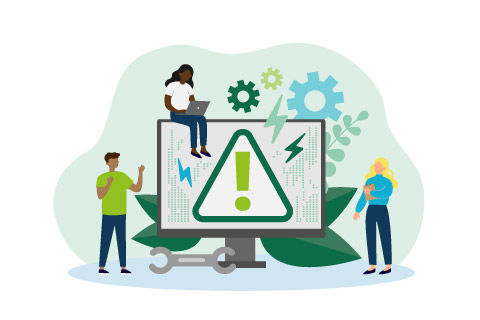There is never a good time for a business’s systems to go down, but outages at a major bank last week proved particularly unfortunate timing. With customers on the lookout for Black Friday deals ahead of the festive season – or just trying to manage costs at an expensive time of the year – thousands were suddenly unable to access their bank accounts or make payments.
There is considerable political and regulatory collaboration with banks to prevent such issues occurring. However, when outages do inevitably happen, they are increasingly impactful, as lenders reduce their physical presence and encourage customers to rely on digital services. When it comes to managing our finances, many of us have become reliant on ‘instant access’, and when this doesn’t occur, we become understandably anxious. How any bank manages this in terms of immediate outreach and reassurance is critical on a number of levels. This is not the first – nor will it be the last – systems outage. A key differentiator lies in how organisations respond to these types of problems and, critically, how well they manage communications with their customers.
Managing customer pain points in times of trouble
One of the consistent issues that customers report to us within the UK Customer Satisfaction Index (UKCSI) is the lack of clear and regular communication from their service provider. Whether that’s a delayed train or a payment not going through, businesses should have a rapid reaction plan in place to keep customers updated using multiple different channels – from email and SMS to social media, to simply being available at the end of a phone line. Reassurance and up-to-date information are the very basics here, and we need to go beyond this. To do this, organisations need to train staff in how to communicate quickly, accurately and transparently with customers when things go wrong. Too often, we hear that staff are ill-prepared to respond to customer questions during a service outage, with the communication between those with a helicopter view of what is happening and those on the ground, dealing with the repercussions often being to blame.
This lack of preparedness was reflected in our latest UKCSI in the summer, which found that organisations are too slow to react when things go wrong (satisfaction with addressing issues and complaints is down by 7.2 points from the same time in 2022).
Technology can be vital in a crisis – but be wary of digital exclusion
In this recent example, the bank in question was quick to take to X (formally Twitter) to share live updates as it fixed the matter, sharing 12 updates over the course of 48 hours. It also highlighted the risk of scammers who may have been using the downtime to target individual account holders.
Organisations can and should use the most appropriate and visible channels available to keep customers informed in times of crisis – but they must also deploy the right blend of people and technology. Over-relying on technology and failing to properly equip staff to have conversations with customers about the issue will only lead to further problems – and can lead to exclusion of customers who don’t use these challenges.
Additionally, at such a stressful time of year, there is a lot to consider when thinking about how to meet the needs of vulnerable customers – right down to how we and customers define themselves as vulnerable in the first place. I know my mum, who would be classified as vulnerable, wouldn’t see herself in this vein and certainly doesn’t want to be referred to as such! But again, this is all addressed by improving the base level of service so all customers get a brilliant, personalised experience. As one MP put it at our All-Party Parliamentary Group meeting on the subject this week: “why can’t we just have good service for everyone?”
I have said many times that customer service can be a driver of value for businesses. It can also be the thing that saves a business when things go wrong. For that to work, however, organisations will need to have done the work in advance to invest in training, people, and technology to deliver in a crisis.



